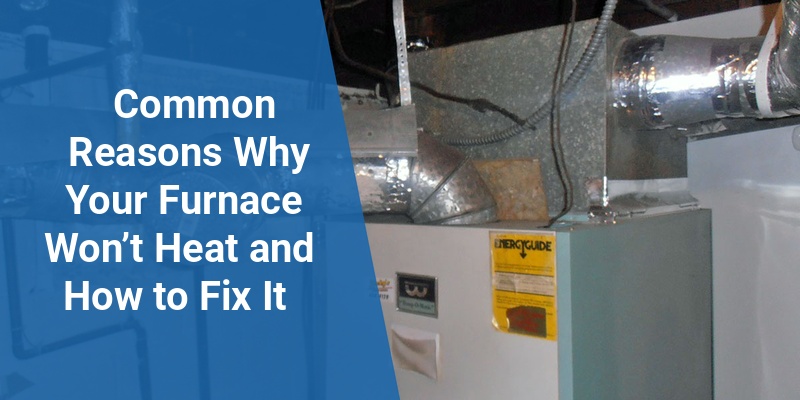Having a furnace that won’t heat can be frustrating, especially during cold weather. Understanding the common causes behind furnace heating failure and knowing how to troubleshoot can save time and money. This article explores the frequent reasons why a furnace may stop producing heat and provides practical solutions to get your system running efficiently again.
| Common Furnace Issue | Possible Causes | Suggested Fixes |
|---|---|---|
| Furnace not turning on | Thermostat settings, power supply issues, tripped breaker | Check thermostat settings, reset breaker, verify power connection |
| Burner won’t ignite | Dirty flame sensor, faulty igniter, gas supply problem | Clean flame sensor, replace igniter, inspect gas line |
| Furnace turns on but no heat | Clogged air filter, blower malfunction, pilot light out | Replace air filter, repair blower motor, relight pilot light |
| Uneven heating or intermittent heat | Duct leaks, thermostat issues, airflow obstruction | Seal ducts, recalibrate thermostat, clear vents |
How a Furnace Works and Why It May Fail to Heat
A furnace heats air and distributes it throughout the home via ducts. When functioning correctly, the thermostat signals the furnace to generate heat, which the blower motor then circulates inside the living spaces. Any disruption in the furnace’s components or supply systems (like gas or electricity) can prevent it from heating.
Common failures include issues with power supply, ignition, air circulation, and control settings. Identifying the root cause is key to restoring heat effectively.
Thermostat Issues That Prevent Heating
Thermostat misconfiguration or malfunction is a primary reason furnaces won’t heat. If the thermostat is set too low or on the wrong mode (cool instead of heat), the furnace won’t activate. Dead batteries, wiring problems, or outdated thermostats can impact signaling.
Steps to troubleshoot thermostat problems:
- Confirm the thermostat is set to heating mode and set above room temperature.
- Replace old thermostat batteries.
- Inspect wiring connections for damage or corrosion.
- Consider upgrading to a programmable or smart thermostat for better control.
Power Supply and Electrical Components
The furnace requires a steady electrical supply for operation. Interruptions in power can cause the furnace to stop heating, even if it appears on.
Check the following electrical causes:
Call 888-906-9139 for Free Local HVAC Quotes – No Obligation, Just Savings!
- Tripped circuit breakers or blown fuses in your home’s electrical panel.
- Disconnected power switch near the furnace unit.
- Faulty wiring or electrical components within the furnace.
Reset breakers, reconnect power switches, or contact a professional electrician if electrical faults persist.
Issues With Ignition and Burner Systems
The ignition system lights the fuel to generate heat. There are two primary ignition methods: flame sensor and electronic igniter. Problems with either can cause the furnace not to heat.
Common burner and ignition issues include:
- Dirty or malfunctioning flame sensor: Accumulation of dirt can prevent proper sensing, causing the system to shut off.
- Broken igniter: A cracked or worn igniter fails to ignite the burner.
- Gas supply interruptions: Issues with the gas valve or supply line stop fuel flow.
Cleaning or replacing the flame sensor, installing a new igniter, and ensuring gas supply flow are critical steps.
Blocked or Dirty Air Filters and Vents
Restricted airflow due to clogged air filters or vents leads to furnace inefficiency and overheating. This safety mechanism shuts down the burner to prevent damage, resulting in no heat.
To maintain proper airflow, regularly:
- Replace or clean air filters every 1-3 months.
- Inspect and clear all vents and returns of obstructions such as furniture or dust buildup.
- Consider professional duct cleaning if dust and debris accumulate.
Blower Motor and Fan Problems
The blower motor circulates warm air through the duct system. When the blower is faulty or the fan is not working, heat may be produced but won’t reach living spaces.
Call 888-906-9139 for Free Local HVAC Quotes – No Obligation, Just Savings!
Signs of blower issues include:
- No air movement despite furnace running.
- Unusual noises from the blower area.
- Intermittent airflow.
Professional inspection is usually required to repair or replace blower motors.
Furnace Safety Switches and Sensors
Safety switches and sensors monitor furnace operation to prevent hazards. Examples include limit switches, pressure switches, and flame sensors. When these detect unsafe conditions, they shut off the furnace’s heating function.
If these components fail or detect issues such as overheating or pressure irregularities, heating stops. Diagnosing faulty safety switches often requires a technician with specialized tools.
Common Maintenance Tips to Prevent Furnace Heating Failure
- Regularly schedule professional furnace inspections and tune-ups.
- Change air filters consistently to maintain airflow.
- Keep vents and registers free of blockages.
- Test and calibrate thermostats periodically.
- Check pilot lights or ignition systems for proper operation.
- Inspect and clean flame sensors annually.
When to Call a Professional HVAC Technician
While many furnace issues can be resolved with basic troubleshooting, certain problems require expert care. These include gas leaks, electrical failures, burner or blower motor replacements, and complex sensor diagnostics. For safety and efficiency, professional service ensures reliable repair and prevents further damage.
Hiring licensed HVAC technicians also helps uphold warranty conditions and ensures compliance with local codes.
